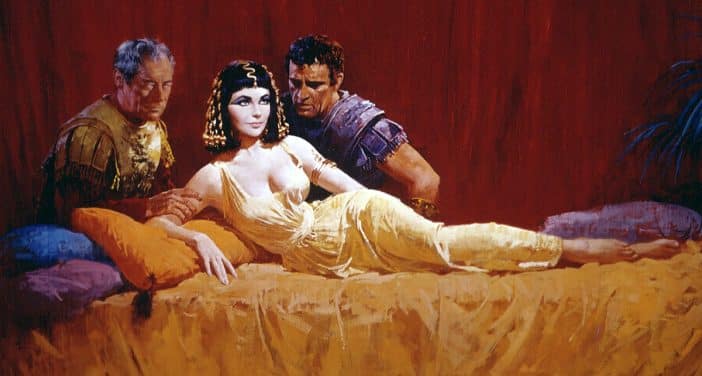
Back in 1963, you couldn’t imagine a hotter Hollywood pairing than Elizabeth Taylor and Richard Burton, who fell in love during the making of that year’s historical drama Cleopatra. This film epic focuses on the efforts of the young queen of Egypt attempting to hold back the imperial ambitions of Rome (represented by Burton’s Mark Antony and Rex Harrison’s Julius Caesar). But what should have been magic, nearly destroyed the 20th Century Fox Studio.
Made at a cost of $44 million (the equivalent today of $360 million), it suffered numerous setbacks during its making and became the most expensive movie ever produced up until that time. What follows is a look at some of the events that threatened one of Hollywood’s greatest studios.
Negative Publicity About Elizabeth Taylor and Richard Burton
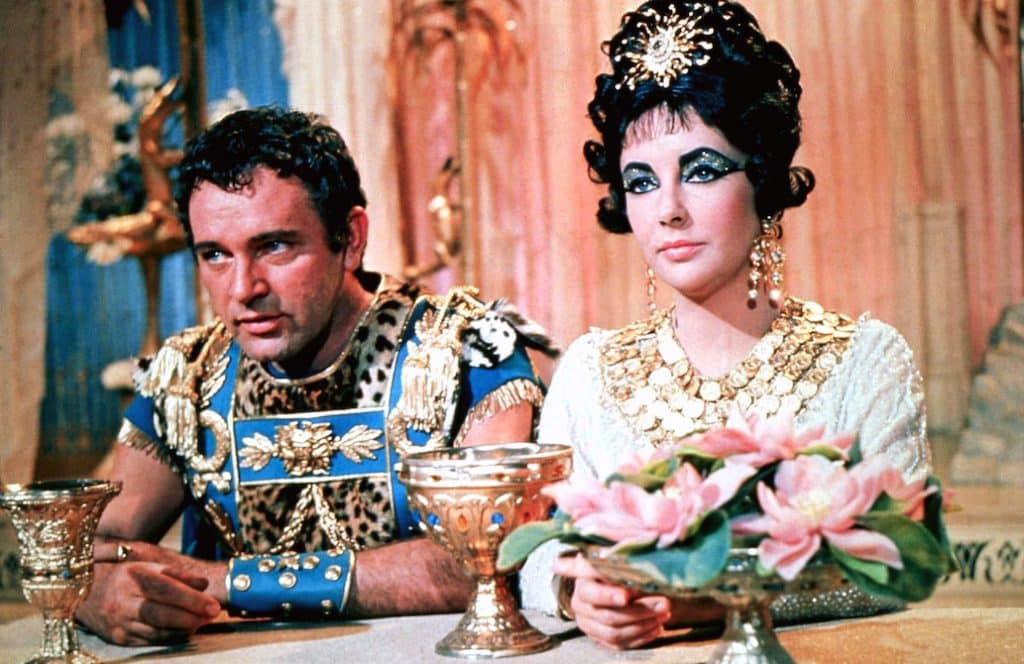
During filming, actors Elizabeth Taylor and Richard Burton began an affair despite the fact both of them were married at the time (Taylor to Eddie Fisher, Burton to Sybil Williams). This led to something of a scandal and generated negative publicity about the production (though the media couldn’t get enough of “Liz & Dick,” as they were dubbed).
RELATED: Elizabeth Taylor’s Granddaughters Share How Grandmother Still Inspires Women Today
The Shooting Schedule
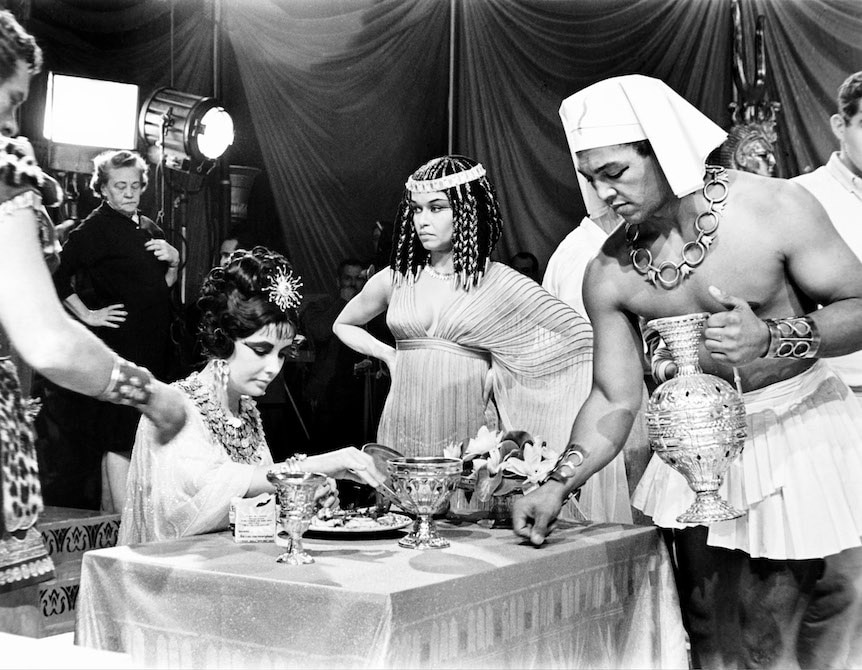
Originally scheduled to be in production for six months, instead things spanned a total of two years (from 1960 to 1962), which resulted in costs spiraling out of control and for the film’s release to be delayed several times.
Health Issues
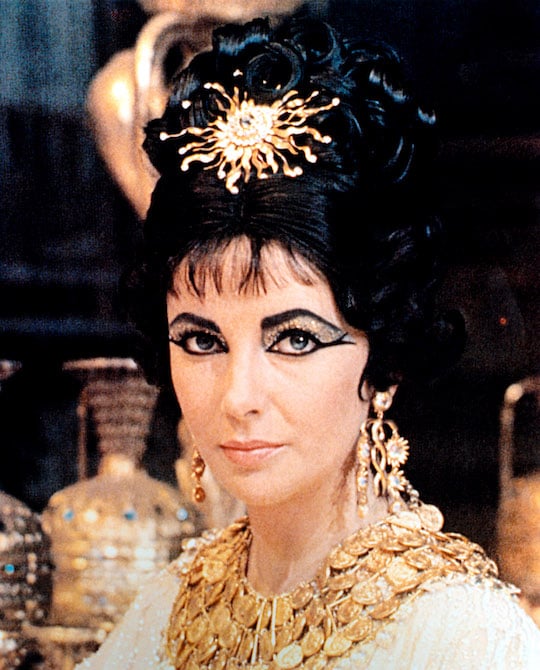
During the making of the film, Elizabeth Taylor suffered from a variety of health problems, including pneumonia and a rare virus that resulted in her being hospitalized, all of which delayed production.
Script Problems
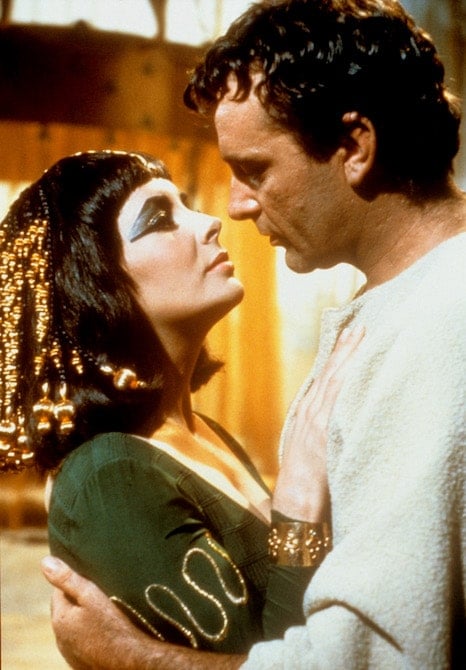
They say it all starts and ends with the script, and on that front, Cleopatra had major issues. In particular, the fact that the screenplay underwent numerous rewrites with several writers contributing to it, much to the annoyance of cast and crew.
Lack of Historical Accuracy
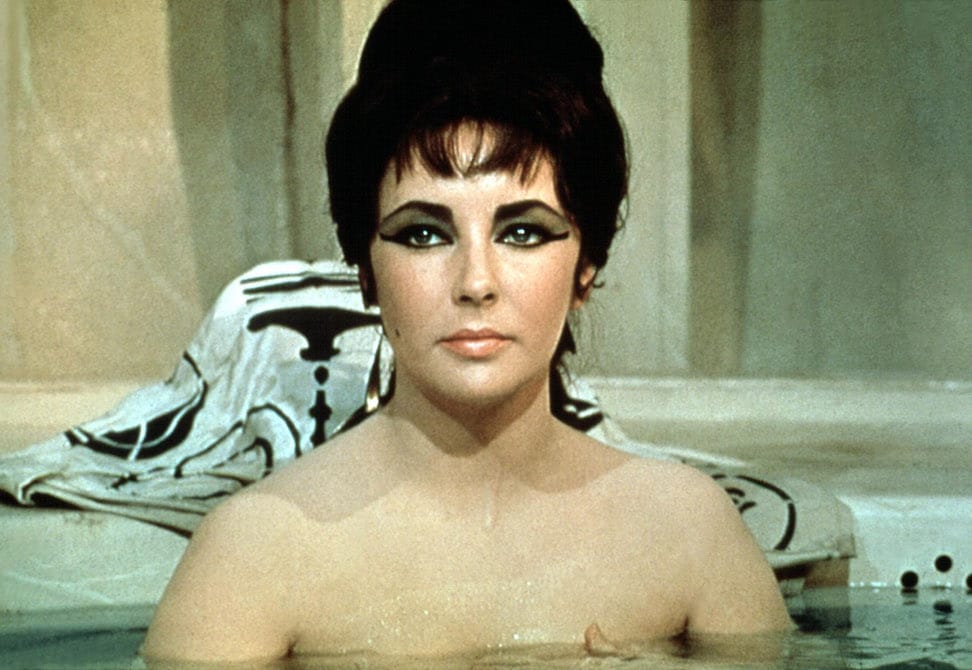
One would be surprised to learn the number of critics and historians that called the film out for its historical inaccuracies, particularly the idea of Cleopatra as a glamorous seductress rather than a shrewd political leader.
“You’re fired!”
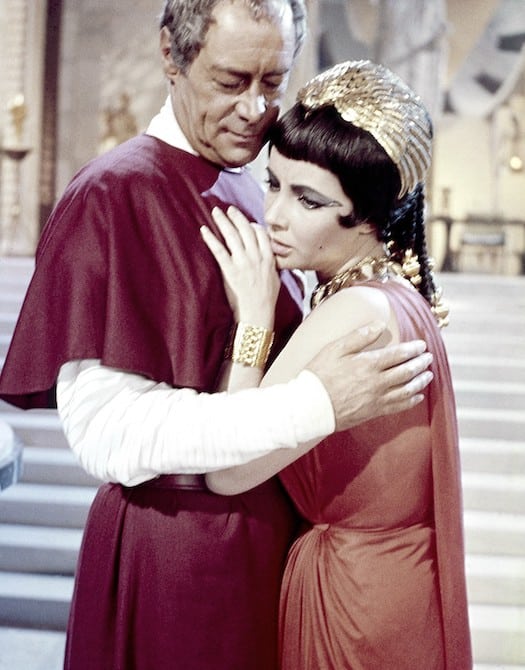
Lots of shake-ups with cast and crew. Original director Rouben Mamoulian was fired after three weeks of shooting had been completed, the original choice for Mark Antony, Peter Finch, left the film and was replaced by Richard Burton; the first editor, Dorothy Spencer, was fired due to the studio being dissatisfied with her work; Elizabeth Taylor’s costume designer was fired after a few weeks of filming; and the director of photography, Jack Cardiff, was replaced midway through production,
Creating the Intermission

The script for Cleopatra was over 500 pages long, and the film’s first cut was over five hours. It was released at a reduced four hours — an unprecedented length for a movie at the time — and resulted in the creation of the movie intermission half-way through.
In the End

As noted, between production and marketing costs, Cleopatra cost $44 million, and when it was released it turned out to be a box office disappointment, pulling in only $58 million from around the world (which is a terrible cost-to-gross ratio). As a result of this and the failure of several other expensive films, 20th Century Fox was forced to sell off some of its assets and make major changes to its management and the way they did business. The resulting financial crisis led to the rise of independent production companies and changed the way films were financed and produced.
And yet, despite it all, Cleopatra was deemed a classic of Hollywood’s Golden Age. It was nominated for nine Academy Awards and won four in the categories of Best Art Direction (Color), Best Cinematography (Color), Best Visual Effects and Best Costume Design (Color).
